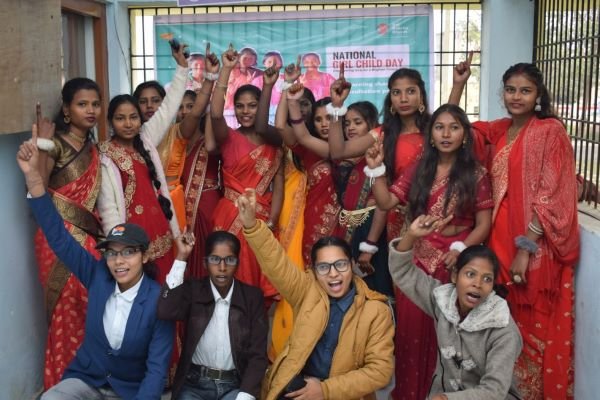SAVING WEAK
The Economics of Trafficking Humans
After years of initiatives and policies, the human trafficking industry works because it’s financially viable, writes Simran Kohli
In 2010, the General Assembly adopted the Global Plan of Action to Combat Trafficking in Persons, urging Governments worldwide to take coordinated and consistent measures to defeat this scourge. The Plan calls for integrating the fight against human trafficking into the UN’s broader programs in order to boost development and strengthen security worldwide. One of the crucial provisions in the Plan is the establishment of a UN Voluntary Trust Fund for victims of trafficking, especially women and children. In 2013, the General Assembly held a high-level meeting to appraise the Global Plan of Action. Member States also adopted a resolution designating July 30 as the World Day against Trafficking in Persons. This resolution declared that such a day was necessary to “raise awareness of the situation of victims of human trafficking and for the promotion and protection of their rights.”
The word ‘trafficking’ means to deal or trade in something illegally. Trafficking in persons, by extension, is the act of buying and selling people for their forced participation in illicit or demeaning jobs, for monetary benefit. Trading human lives for money has been a part of several cultures since before recorded history. Notably, from a 21st-century perspective, slavery was a subset of human trafficking, albeit, for a large portion of the time in which it was practiced, it wasn’t illegal. What presents itself to us today is a modern, more discreet form of slavery; people being forced to work in abysmal conditions against their will, for little or no money. Personally, I find the fact that trafficking in persons is still a live issue, that there are still millions of people in our primed and groomed society that are not rattled by the idea of objectifying other people to the extent of using them for a pure monetary benefit, utterly disgraceful. There are multiple parallel issues that support and further enable the exploitation of people: poverty, overpopulation, the refugee crises, the quality of governments in third world nations, lack of education, gender inequality, slow or stagnant economies, and extremely skewed values and beliefs about human dignity.
Human trafficking is a legacy of the slavery system. On paper, slavery may have been abolished in the USA by the 13th Amendment in 1865, but on the ground level, the buying and selling of people never really stopped. All it did was compromise its reach and make it scuttle underground.
The International Labour Organization estimates that there are over 21 million trafficked people in the world, and the numbers are rising. Of these numbers, a mere 1-2 percent are ever rescued. Today, human trafficking is the third largest criminal industry in the world, after weapon and drug trade. It is a 150 billion US dollar per annum economy, criminalizing and corrupting the global financial system enormously. Despite this, it is one of the least researched and reported on issues. The practice of trafficking is shrouded in an ambiguous understanding of the issue and vague laws that do not work because these crimes are varied and individualized, with most of them having little or no commonality with each other. Anti-human trafficking laws in India deal with specific instances of trafficking to prevent bonded labour, child labor, commercial sexual exploitation, etc. However, instances of such heinous crimes happen mostly in areas where people are not aware of their rights and have led such deprived lives that they do not realize what is happening to them or that there is a way out. Also, each crime is so drastically different in its nuances from the next that it is virtually impossible for lawmakers and executors to cover all bases in a country like India that has countless shady nooks and crannies. The statistics speak for themselves. The threat of a metaphorical beating, or any other negative reinforcement technique, clearly does not work. It has never worked. Scaring people into good behavior is a temporary solution and a highly convenient way to deflect the issue. In my opinion, we need a couple fewer policemen, and a couple more researchers to meet the Sustainable Development Goal of putting an end to this abominable practice by 2025.
Human trafficking, like any other industry, works on a system of buyers and sellers, supply and demand. The reason that this industry thrives is that it is economically viable to exploit people. A person, unlike any other classical product, can be re-sold and the work done by a trafficked person is highly repeatable. The only limitation is the time angle; apart from that, human capital is extremely resourceful and as a rule, it will be cheaper coming from a slave than for someone who expects to be paid for their troubles. All morality aside, the trafficking of people continues in the world, because economics supports it. There is, and will always be, a demand for cheap labour, cheap sex, cheap organs, and any other cheap commodity that a person can offer. For someone only interested in the price of a good, with enough animal instinct in him to be able to view a fellow human as a ‘good’, a trafficked human being is an easy choice.
One might also argue that there is an absence of political will to resolve this issue and that there is no real need for subjugated people being made to work against their will to make the world go round. That with enough policies, laws, and enforcement, we can decrease profit possibilities and demand for trafficked persons, thereby passively eroding the foundations of this industry. In this vicious cycle, if the demand side of the scale crashes, it will bring down the whole structure with it. (Since the supply side of this equation has no say in the matter, there are no viable alternatives to this.) While this seems brilliant theoretically, practically, such policies are nearly impossible to create and execute. If formulated, however, they have the power to root out a rotten system, not just knock off a few blocks of its top. If conferences, charters, laws, white collars and all the other organized systems of the civilized world are how we are going to resolve the problems that stem from the barbaric instincts of humans, then that irony will wreck havoc and severely hinder any problem solving, unless we weed out the political preface behind our policies and replace them with well researched, intensive sociology.

































